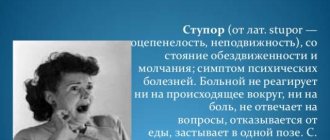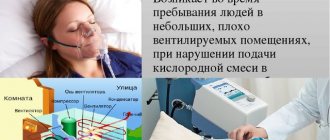Statistics show that more than half of the deaths of Russians under 54 years of age had diseases resulting from alcohol abuse. Excessive regular consumption of strong and low-alcohol drinks leads to dire consequences.
- What is alcohol intoxication
- Types of alcohol intoxication
- Stages of alcohol intoxication
- Stage 1 of intoxication: mild degree
- Stage 2 of intoxication: average degree
- Stage 3 of intoxication: severe
- How is severe intoxication determined?
- How does a person behave when intoxicated?
- Signs of alcohol intoxication
- External signs of a drunk person
- Person under the influence of alcohol
- Consciousness during alcohol intoxication
- Sclera during intoxication
- Diagnosis of alcohol intoxication
- State after alcohol intoxication
- Help with alcohol intoxication at the AlkoZdrav clinic
Types of alcohol intoxication
Drunkenness can be divided into simple and modified simple. In the second case, a person may behave inappropriately, paranoid tendencies or hallucinations may arise. It is worth noting that the degree of intoxication depends not only on the amount of alcohol, but also on the speed of its consumption. For example, 200 ml of pure alcohol drunk over 4 hours will lead to a drunken state. In 1 hour it will cause severe poisoning of the body.
Still have questions? Call us!
8
Free consultation and appointment
Stages of alcohol intoxication
The state of intoxication is measured in ppm. This is the number of alcohol in milliliters per 1 liter of blood. An ethanol content in the blood of up to 1.5 units is considered mild, and up to 2.5 is considered moderate. The number of ppm in the blood up to 5 is a severe degree of intoxication. More than 6 is a lethal dose.
Stage 1 of intoxication: mild degree
Mild intoxication makes itself felt by the following signs:
- All problems fade into the background, a person becomes sociable (sometimes excessively), cheerful, tightness and embarrassment disappear.
- The skin on the face turns pink due to dilation of the capillaries.
- The pulse quickens.
- A pleasant state of relaxation and tranquility.
- Slowing down the reaction rate.
It is precisely because of this state of liberation that many alcoholics begin to drink. This is especially true for people who are quiet by nature and find it difficult to meet people and communicate. Increasingly regular consumption of alcoholic beverages leads to addiction.
Stage 2 of intoxication: average degree
The nature of intoxication is quickly changing - just a minute ago the person communicated and loved everyone around him, but now he has become angry and cheeky. This means that the ppm level in the blood has increased to the average stage. You may notice incoherent speech, aggressiveness and rudeness, and loss of coordination. Even calm and kind people in this state can begin to provoke conflicts out of nowhere.
Stage 3 of intoxication: severe
An increase in the amount of alcohol, if not stopped in time, leads to the third stage. Severe alcohol intoxication can become dangerous not only for the drinker, but also for those around him. The person does not understand at all what is happening around him, he is not able to utter a word, coordination is completely impaired. Oddly enough, at this moment the level of libido increases sharply. In this state, many crimes are committed that people do not even remember when sober.
Alcohol breakdown products are eliminated from the body within approximately 24 hours. In this case, the breath is cleansed first, then the blood, and lastly the urine. For the first two stages, if we are not talking about an inadequate mental state, no medical intervention is required - a person just needs to sleep, drink plenty of water and eat a hearty meal.
Alcohol and drug intoxication
Some people, in search of even more unusual sensations, combine alcohol with drugs. Sometimes such experiments go relatively well, but sometimes they can be fraught with a number of serious consequences. Let's look at the most common combinations of alcoholic beverages with other drugs.
Antidepressants
Manufacturers of any drugs that have a psychoactive effect warn patients against combining such medications with alcoholic beverages. Antidepressants are no exception in this sense - they are not recommended to be used with alcohol. However, these warnings do not stop everyone.
Antidepressants (Fluoxetine, Adyuvin, Coaxil) help increase the activity of serotonin, a neurotransmitter responsible for a person’s feeling of joy. Because this level is elevated when drinking alcohol, the initial feeling of euphoria is enhanced. The person appears drunk, but continues to feel the effects of antidepressants.
The bad news is that combining antidepressants with alcohol causes headaches and cardiac arrhythmias. In severe cases, difficulty breathing may occur. Let's add here the doubled load on the liver and kidneys, and we get a very unpleasant result of this combination.
Barbiturates
Drugs in this group have a pronounced sedative effect - they have an inhibitory effect on the central nervous system and cause drowsiness. The most common brands:
- Phenobarbital;
- Talbutal;
- Butizol;
- Nembutal;
- Repozal.
In addition, barbiturates enhance the effects of alcohol. However, the quality of intoxication deteriorates significantly - the head becomes heavy, the desire to sleep appears, and muscle weakness develops. If a person has taken too much alcohol, he soon falls asleep, and such a dream can result in a coma. There are frequent cases of vomiting in an unconscious state, which causes asphyxia.
Cannabinoids
In the late sixties of the last century, which was rightfully considered the era of hippies, the combination of alcohol with cannabis-based substances was very popular among representatives of informal youth movements. Such a combination is not uncommon in our time. Cannabinoids tend to aggravate tactile and emotional sensations, often having unpredictable effects on the psyche. Depending on the emotional state at the time of using hashish or marijuana, a person may experience increased joy, thoughtfulness or sadness.
On the one hand, alcohol enhances the feeling of “altered reality” and helps stabilize mood swings due to its inhibitory effect on the nervous system. On the other hand, it increases blood pressure and increases heart rate. As a result, this combination can lead to cardiac arrhythmias and severe headaches. A person prone to high blood pressure may experience a hypertensive crisis and even a stroke. Increasing physical activity at such times may increase the risk of cardiovascular complications.
Psychostimulants
Almost everyone knows about substances like cocaine or methamphetamine - if not from personal experience, then from feature films, periodicals and news reports. Psychostimulants are notable for the fact that, unlike alcohol, they have a stimulating rather than an inhibitory effect on the nervous system. They not only cause euphoria, but also increase performance as brain activity is activated. Taking alcohol together with such substances causes, so to speak, cognitive dissonance in the body: on the one hand, it is given a sharp stimulus to become more active, and on the other hand, this activity is immediately slowed down by drinking alcohol.
As a result, the euphoria fades away: the person begins to feel tired and even depressed - not at all what he was striving for due to such a combination. As with any case of combined use of alcohol with potent drugs, the load on the liver increases. But here it will be especially noticeable - an unpleasant pulling sensation appears in the right hypochondrium, diarrhea often occurs, and sometimes it ends with profuse vomiting.
How does a person behave when intoxicated?
A person under the influence of alcohol can behave in completely different ways. Some people become aggressive and picky, others may start crying and complaining. Both men and women experience increased sexual desire, which often leads to casual sex without contraception. There are also those who simply fall asleep when drunk.
Separately, it is worth dwelling on cases of mental inadequacy. If a person starts getting into a fight, running with a knife after “monsters”, “dragons”, etc., it is best to seek help from doctors. Under no circumstances should you start a showdown or scold a drunk, because he is not aware of his actions.
What is intoxication and what substances cause it?
Intoxication is a condition that occurs under the influence of psychoactive substances and is characterized by a set of functional disorders of a mental, neurological, vegetative, and in severe cases, somatic nature. In medical science, according to ICD-10 (International Classification of Diseases, 10th revision) it is designated as acute intoxication.
Depending on the factor that caused intoxication, the following types are differentiated: • Alcohol intoxication (acute alcohol intoxication). • Pathological alcohol intoxication. • Acute opioid intoxication caused by the action of morphine, heroin and other opioids. • Intoxication caused by taking cannabinoids (cannabis preparations in the form of hashish, etc.). • Acute intoxication that develops with the use of sedatives and hypnotics, for example, barbiturates. • Cocaine intoxication, accompanied by increased mood, euphoria and a surge of energy. • Intoxication with hallucinogens and psychedelics. • Acute nicotine intoxication with unstable mood and sleep disturbance. • Intoxication associated with the action of inhaled volatile solvents (vapors from glue, paint, gasoline, etc.). This also includes intoxication with nitrous oxide and other drugs for inhalation anesthesia. • Acute intoxication that occurs when using several psychotropic substances.
Alcohol intoxication is caused by the most common, accessible, legal and controlled only by the State Traffic Safety Inspectorate type of psychoactive substance. The toxic effect of alcohol on the body can be so significant that it can even lead to death. Read our article on how to get a certificate from a narcologist for the traffic police.
Signs of alcohol intoxication
Signs of intoxication include:
- Change in facial expressions;
- overly active gestures and loud voice;
- staggering, lack of coordination;
- change in behavior, for example, a calm person suddenly became nervous and angry;
- in severe cases of intoxication, fecal and urinary incontinence is possible.
If a drunk has passed out completely, the pulse has become slower and uncontrollable bowel movements or urination have occurred, it is necessary to urgently call an ambulance. Alcohol coma can lead to a detailed outcome.
External signs of a drunk person
From a purely outward appearance, a drunk can be seen immediately.
Person under the influence of alcohol
A drunk person reveals himself primarily by changing his facial expression. This may be either too active facial expressions, or, conversely, complete detachment. The look with small doses of alcohol becomes “brilliant”; with an increase in the amount of alcohol, the pupils of the eyes may stop reacting to light.
The skin on the face first becomes pink, and with severe intoxication it turns pale. A blue tint and swelling indicate a disruption in the functioning of the heart and kidneys.
Consciousness during alcohol intoxication
As mentioned above, the consciousness of a drunk can be either scattered or completely disconnected. The most dangerous option is when a person cannot sleep and becomes aggressive.
Sclera during intoxication
If we are talking about severe alcohol intoxication, the sclera of the eyes acquire a yellowish tint. This indicates problems with the liver. Such medical clinical signs require medical intervention.
Field score:
Total score:
Patient age
Length of use
What he uses Has he previously undergone treatment Consent to treatment Concomitant diseases Employment
Waiting for values to be entered
State after intoxication
After drinking alcohol, a person begins to feel symptoms of intoxication in the body:
- Nausea and vomiting.
- Hand tremors.
- Dry mouth, thirst.
- Aversion to alcohol.
- Completely inoperable.
- Chills.
- Headache.
- In severe cases, increased blood pressure and tachycardia.
As a rule, after drinking too much alcohol, it is enough to increase the amount of water, take vitamin C, eat a hearty meal, take a shower and sleep. If we are talking about severe cases (heart rhythm disturbances, vomiting does not stop, stomach pain), you may need the help of a narcologist. You also need to call a doctor if a person has been on a binge for more than 3 days - it will be almost impossible to stop on your own without cleansing the body.
Opium group
(opium - raw - “hanka”, heroin, codeine, morphine, etc.)
Signs of intoxication
Characteristic: unusual drowsiness at different times, slow “drawn out speech”, often “lags behind” the topic and direction of the conversation, good-natured, flexible, helpful behavior, the person seems to be in thought, strives for solitude in silence, darkness, regardless of the time of day . Mood ranges from normal to euphoric. Coordination of movements is not impaired. The pupils are narrow (about the size of a pinhead), the skin is pale, dry, and sometimes itchy. Novice users may experience vomiting.
Abstinence (“withdrawal”)
The face is pale with an earthy tint, dark circles around the eyes. Runny nose, sneezing, nausea, vomiting, diarrhea. Aching pain in the joints, muscles of the arms, legs, lower back, back, due to which patients cannot find a place for themselves. Chills, cold sweat. Insomnia. No appetite. The pupils are dilated. The mood is sad and angry. Patients are irritable and aggressive. Abstinence without treatment lasts up to 10-12 days.
Consequences of long-term use
The consumer is exhausted. The skin is pale, wrinkled. Looks much older than his age. Teeth may be destroyed. Nails and hair are dull and brittle. Many punctures in the area of the veins, “tracks”. Decline of sexual function. Abscesses on the skin and internal organs, blood poisoning, liver and heart damage are common. Lost interest in the outside world. Memory deteriorates, fatigue increases, and the range of interests narrows. Huge risk of contracting HIV and hepatitis due to the use of shared syringes. There is a very high risk of overdose with serious consequences, possibly fatal.










